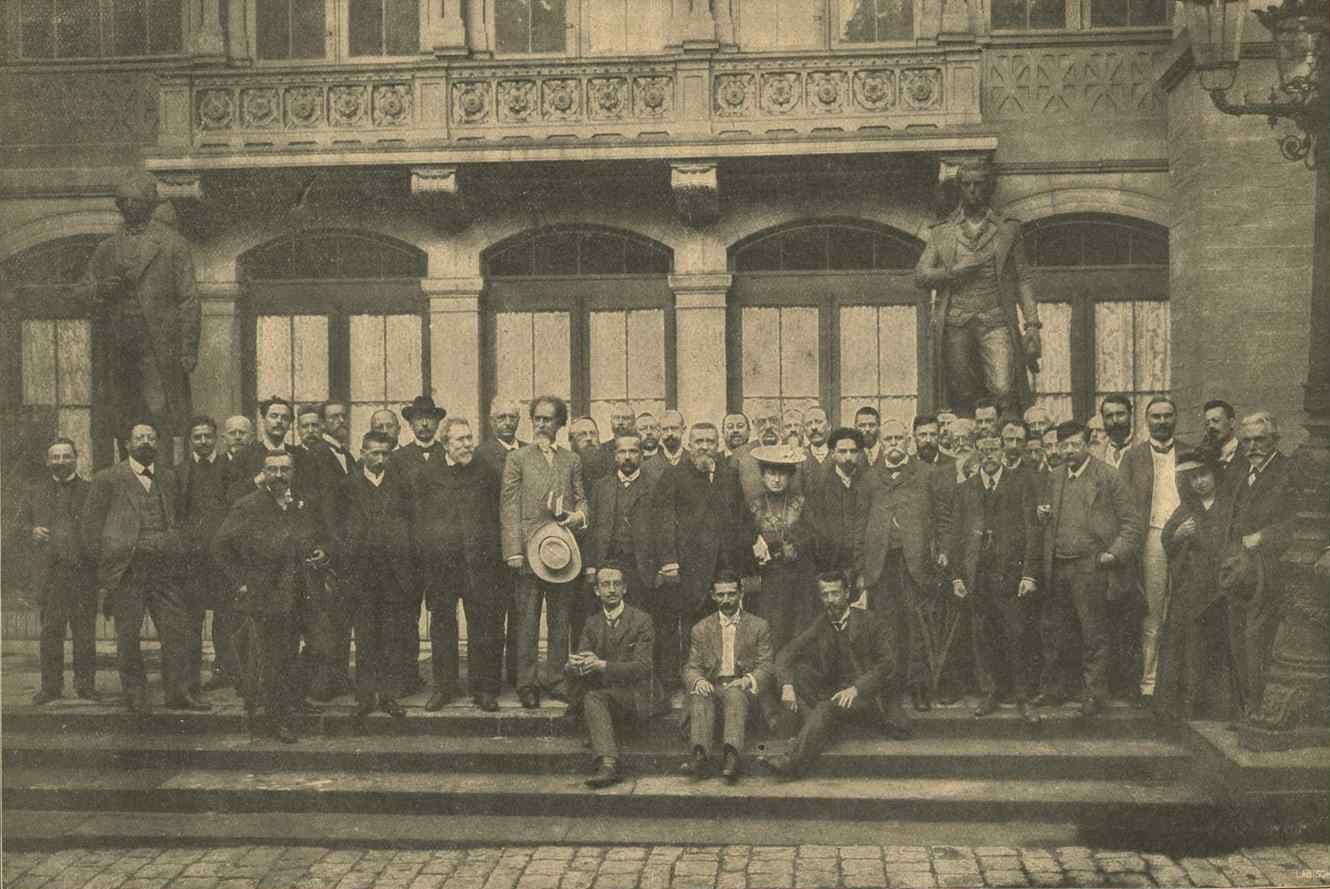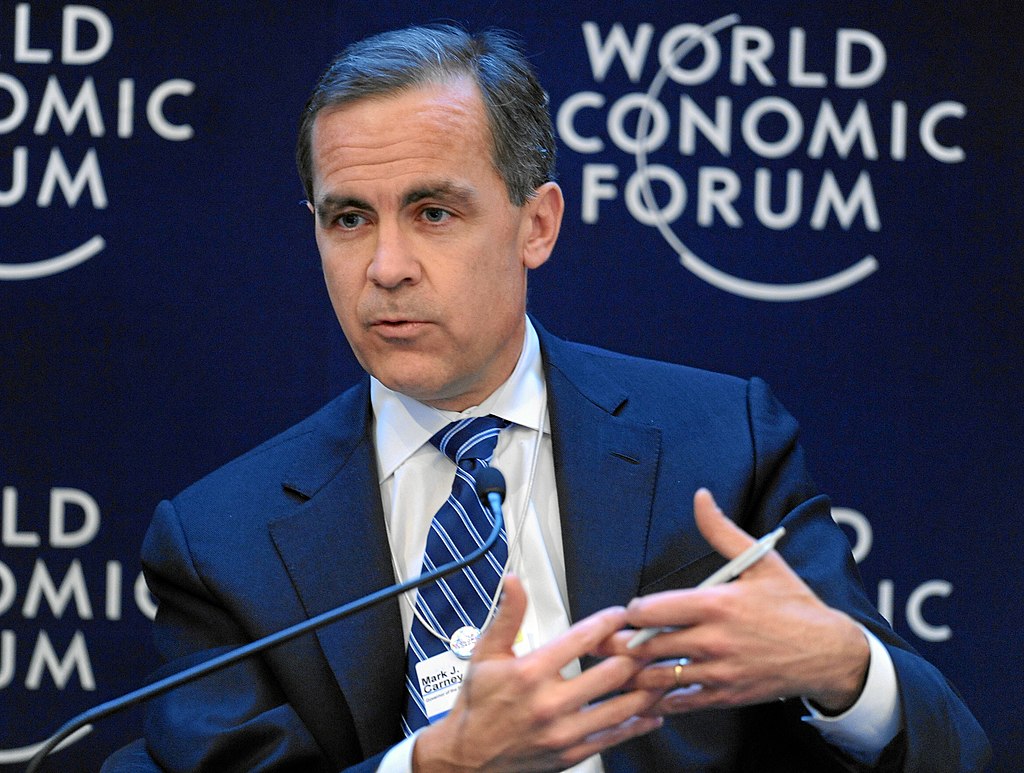This article is part two of a four-part series providing a political history, overview and critical evaluation of the social democratic tradition in Western politics, with some reference to the Canadian experience. This series is a re-publication of the 2017 Discussion Paper entitled ‘Reflections on the Social Democratic Tradition‘ by Andrew Jackson, Broadbent Institute Senior Policy Advisor. Read Part one: What is Social Democracy?, Part three: Social Democracy from the Golden Age to the Great Recession, and Part four: Contemporary Prospects for Social Democracy.
Returning to the history of social democracy as a political and social movement, one can note a complex and changing relationship to some of the core tenets of socialism as noted above. From the 1870s until the First World War, socialist parties from the major European countries were united to a degree through the Second Socialist International, which was heavily influenced by avowedly Marxist parties. A leading ideological role was played by the German Social Democratic Party (SPD) led by Karl Kautsky and strongly influenced by Engels. The SPD was strongly rooted in the industrial working class and became a mass party in pre-First World War Germany.
There were avowedly Marxist socialists in Britain such as William Morris and Eleanor Marx, though the dominant political influence in the labour movement and the British Labour Party came from the Fabians such as George Bernard Shaw and Sidney and Beatrice Webb. The labour movement embraced political action, first through the Independent Labour Party, primarily to win recognition of unions and to push for social reforms through parliamentary politics. British socialism also drew on radical religious and democratic traditions dating back to the Levellers of the English Civil War who promoted not just political and civil rights but also substantive equality and government for the people.
French socialism was very much influenced not just by Marxist socialism but by radical republican and insurrectionary traditions dating back at least to the French Revolution. Anarchists and syndicalists were influential opponents of trade union political action, emphasizing winning power within the workplace as a prelude to Fsocialism.
Second International socialism was heavily influenced by the mechanistic view that capitalism rendered social and economic progress for workers impossible. The expectation, set out in summary terms in The Communist Manifesto and at length in Capital, was that the economic system would collapse as a result of its own internal contradictions (concentration of wealth and over-accumulation of capital on the one hand and mass immiseration and thus lack of effective economic demand on the other hand).

The expectation was that capitalism would be replaced by a new social order based upon the self-conscious political ascendancy of the mass industrial working class. The task of socialists was to build a class-conscious mass movement rooted in the workplace and in communities, and this was to be accomplished by building not just mass unions but also a whole umbrella of working-class organizations, from reading clubs to co-operatives and mutual aid societies to recreational associations that made up a society within a society.
The fact that unions and socialist parties were often illegal until late in the century underlined the notion that moving beyond capitalism would involve a fundamental political rupture, though Marx himself recognized that a longer term transition through democratic institutions might be possible in a country like Britain. For their part, the traditional governing classes and capitalists often resisted political democracy out of fear that it would unleash and empower social forces that would destroy private property.
However, even The Communist Manifesto set out a number of immediate economic and social demands, and the reality on the ground in Britain, Germany, the United States and elsewhere was that working-class living standards, especially those of the “labour aristocracy” of skilled workers, gradually advanced in the late Victorian era, not least due to the growth and recognition of labour movements and the growing political influence of labour-based political parties that grew in scale and importance as the franchise was extended.
As the struggle for democratic political rights progressed and as socialists and reformers gained some degree of political leverage, especially in divided legislatures, social reforms were gradually advanced and implemented. Moreover, to have such influence, socialists were obliged to co-operate with other political forces and to reach out to social groupings other than the industrial proletariat, which was in a minority even within the most advanced industrial economies such as Britain and Germany. From France to Sweden and especially in Canada socialist parties gained support from small farmers and traditional small producers as well as from intellectuals and some elements of an emerging technical and professional middle class.

Within the Second International, Marxist purists argued for an exclusively proletarian party committed to the socialist revolution that would arise from the collapse of capitalism. But key thinkers such as Edward Bernstein in Germany and the Fabians in Britain argued that the industrial working class could and was winning gains and shaping the economic and political order, and that even greater progress could be made by making the idea of socialism more explicitly reformist and by supporting electoral co-operation with non-socialist forces. Socialism in the sense of common ownership of the means of production remained the goal, but came for some to be a distant, vague and long-term goal. In short, evolutionary socialism emerged in counterpoint to revolutionary socialism as working-class parties gained a foothold in democratic institutions.
Nonetheless, social democrats were still committed, at least formally, to common ownership and economic democracy. For example, the guiding set of principles of the British Labour Party set out in Clause 4 adopted in 1918 and repealed only in 1995 said the party’s aim was:
“To secure for the workers by hand or by brain the full fruits of their industry and the most equitable distribution thereof that may be possible upon the basis of the common ownership of the means of production, distribution and exchange, and the best obtainable system of popular administration and control of each industry or service.”
The division between evolutionary and revolutionary socialists became entrenched and institutionalized when most mass socialist parties divided in the great schism between social democracy and communism after the First World War and the Russian Revolution. The break began when the majority in socialist parties voted war credits to their national governments rather than heeding the injunction of the International to put working-class unity before national capitalist interests. After the Bolshevik revolution in Russia, socialism divided into two firmly opposed camps, social democrats or democratic socialists on the one hand and communists on the other, with the latter calling for a global revolution and the dictatorship of the proletariat as opposed to promoting change through the institutions of “bourgeois democracy.” Communists could point to the Soviet Union as actually existing socialism, a concrete example as opposed to a blueprint. The Leninist espousal of a vanguard party discounted the importance not just of liberal democratic political institutions and rights, but also, under Stalin, of genuine intra-party democracy. Setting aside the Popular Front period of the late 1930s, it was only after 1945, and then slowly and hesitantly, that most mass Communist parties in Europe also embraced the electoral road to socialism and the need for co-operation with non-socialist political forces.
In Canada, the small socialist movement before the First World War was heavily influenced by both the British Labour Party and by continental Marxist socialists. (On social democracy in Canada, see Walter D. Young, 1969 and Ivan Avakumovic, 1978.) The institutional expressions of the former were small labour parties linked to unions in the major industrial centres such as Toronto, Montreal, Vancouver and Winnipeg and in resource-based communities such as Cape Breton. These co-operated to a degree with strong progressive farmers’ organizations and with middle-class movements for social reform, especially those linked to the social gospel tradition in the Protestant churches.

Though they were decidedly minority currents, there were also small Marxist socialist parties such as the Socialist Party of Canada, often finding support among miners and the resource sector working class of diverse ethnic origins in Western Canada, notably British Columbia. Part of the latter grouping would go on to become, in 1933, one important part of the central electoral force for social democracy — the Co-operative Commonwealth Federation (CCF).
While it had some labour support, the CCF was not a labour party on the British model, and a formal relationship with the labour movement as a whole was not established until the founding of the New Democratic Party (NDP) in 1961. In electoral terms, the CCF was quite marginal in the inter-war years, though it established a parliamentary voice and presence under the leadership of J.S. Woodsworth that had some influence on wider political debates in the 1930s and led to some representation in provincial parliaments.
For example, Woodsworth was able to use labour influence in a minority government situation to establish a rudimentary old-age pension in 1927. CCF influence increased in response to the Great Depression of the 1930s, but it was only during and immediately after the Second World War that the CCF won broad popular support and pulled the Liberal Party sharply to the left.
As in Europe, the early labour and socialist parties in Canada viewed themselves as leaders and activists in a movement for social change and the key goal was to win others to the cause of democratic socialism through education, agitation and political campaigns rather than just to elect members to legislatures. The movement/party distinction advanced by Walter Young (1969) in his history of the CCF can be overdone but the primary motivation of activists was certainly to advance social and economic justice through political mobilization and not just to secure votes.

By the start of the inter-war period, social democracy had emerged in Canada as a more or less coherent ideological and political force committed to drastic social and economic reform through a strong labour movement and labour-based political action within the context of democratic political institutions.
Social democrats advocated fundamental change, but that commitment to change through democratic institutions and in co-operation with other social movements necessarily implied some degree of gradualism and incrementalism. The immediate goals emphasized in elections and in day-to-day organizing to build the movement were to win basic labour rights (not won in Canada until 1944), and to advance the case for social rights in the form of public pensions, unemployment benefits, public health insurance and access to education at all levels. But the ultimate goal of socialism in the sense of common ownership of at least the “commanding heights” of the economy in place of private ownership remained.
The Regina Manifesto of the CCF concluded, as outlined below, with the stirring statement that the party would not rest content until it had “eradicated capitalism.” The call for fundamental economic as well as social change was certainly sharpened by the searing experience of the Great Depression. The CCF was very explicit about building a socialist economy in place of the capitalist economic order and called for socialization of finance and most major industries as the indispensable base for national economic planning.
WE AIM TO REPLACE the present capitalist system, with its inherent injustice and inhumanity, by a social order from which the domination and exploitation of one class by another will be eliminated, in which economic planning will supersede unregulated private enterprise and competition, and in which genuine democratic self-government, based upon economic equality will be possible.
The present order is marked by glaring inequalities of wealth and opportunity, by chaotic waste and instability; and in an age of plenty it condemns the great mass of the people to poverty and insecurity. Power has become more and more concentrated into the hands of a small irresponsible minority of financiers and industrialists and to their predatory interests the majority are habitually sacrificed.
When private profit is the main stimulus to economic effort, our society oscillates between periods of feverish prosperity in which the main benefits go to speculators and profiteers, and of catastrophic depression, in which the common man’s normal state of insecurity and hardship is accentuated. We believe that these evils can be removed only in a planned and socialized economy in which our natural resources and principal means of production and distribution are owned, controlled and operated by the people.

Social democracy was a political force from the late nineteenth century, but its influence on the wider society came mainly from the political pressure exerted on more reformist forces and occasional participation in centre-left coalitions. This was also true of the inter-war period. In Britain, the Labour Party was able to push for social reforms from the Liberal Party before the First World War, after which time it became the major political opposition to the Conservatives but distant from power. The Labour Party briefly formed singularly ineffectual minority governments in 1924 and 1929-31, which split the party. The British Labour Party leadership essentially embraced the economic orthodoxy of the gold standard and austerity until well into the 1930s.
In much of continental Europe, the left was deeply divided between social democrats and communists, and this and the lack of an effective policy response to economic collapse helped set the stage for the rise of Fascism in Germany and Italy. The German SPD was a weak minority coalition partner through much of the brief and tragic history of the democratic Weimar Republic, which suffered from the burden of reparations and hyperinflation followed by mass unemployment.
Social democrats in France and Germany were far from power when the Great Depression came, and unsure how to respond. The rise of Hitler to power in 1933 set the stage for the profoundly divided French left to briefly unite against Fascism, and the Popular Front of centre and left parties supported by the Communist Party took power in 1936 but failed to agree on economic policy. The Popular Front did make some significant social progress under the leadership of Socialist Prime Minister Leon Blum, including enacting legislation which legalized collective bargaining, establishing the 40-hour work week, and guaranteeing two-week paid vacations, among other benefits.
Social democrats cannot be said to have risen well to the enormous challenge of the Great Depression, which plunged the industrialized world into mass unemployment and seemingly vindicated the socialist view that capitalism stood in the way of further social and economic progress. While rejecting Communism, many social democrats thought lessons were to be learned from the Soviet Union, which was rapidly industrializing through central planning and state ownership.

The leading British Fabians, Sidney and Beatrice Webb, published a 1,000- page tome, Soviet Communism: A New Civilization? in 1935, and dropped the question mark in the 1941 edition. Leading Labour Party intellectuals such as John Strachey and Harold Laski argued that capitalism had to be replaced by a planned economy based upon widespread public (mainly state, but also co-operative) ownership. Like many other social democratic parties, the CCF in the 1930s strongly advocated for economic planning and much higher levels of public ownership and regulation of private capital. However, social democrats slowly drew other lessons from the Stalinist experience, such as the case for markets even in a socialist economy, and the case for diversified forms of social ownership as opposed to highly centralized state planning (to say nothing of concern with Stalinist violence and terror). In the 1930s, G.D.H. Cole and the Guild Socialists in Britain promoted worker control of industry and not just state ownership and bureaucratic administration and this was a minority current within the union movement.
Positive lessons for the post-war years were to be learned from FDR and the New Deal in the United States, which strongly supported the rise of the US labour movement, advanced collective welfare through work relief programs and the enactment of social security, and forcibly, if ultimately inadequately, intervened to revive the economy through public investment.
There was, however, no sustained recovery or end to mass unemployment until mobilization for the Second World War. The democratic left could also look to the experience of Swedish social democracy in the 1930s. The Swedish social democrats led coalition governments from 1921. They won significant social reforms and were looked to by others as a model. In Sweden, the labour movement and employers essentially agreed to a class compromise through which the commanding heights of the economy were to be left in business hands in return for a commitment to full employment, the welfare state, and near universal unionism.
The commitment to full employment was more than symbolic. As John Kenneth Galbraith (1994) noted in A Journey Through Economic Time: “In a just world, reference would be made not to the Keynesian but to the Swedish revolution.” The Swedish social democratic government successfully reflated the economy and created jobs through major investments in infrastructure and housing (albeit helped by exports to Germany after the Nazis took power).
Social democratic parties slowly came to embrace, promote and even implement (in Sweden) the idea of Keynesian economists that governments should stabilize the capitalist economy through public investment, control of interest rates and the volume of credit by central banks and financial regulation, collective bargaining to link wages and productivity, regulation of prices in some sectors, and other key levers of economic management. But Keynesianism was not widely understood until the post-Second World War period, when it was embraced by a much larger range of political forces than social democracy. Certainly the 1930s destroyed the credibility of orthodox economics and vindicated the socialist view that unregulated and highly unequal liberal capitalism could lead to economic and social disaster.
Progressive economists and policy-makers and most social democrats drew the lesson that the state had to play a key role as a regulator of private capital, not least of the financial sector and monopolies, that strong unions and the welfare state are needed to sustain high levels of purchasing power and effective demand in the economy, and that public investment can help counter downturns due to low levels of business investment.





